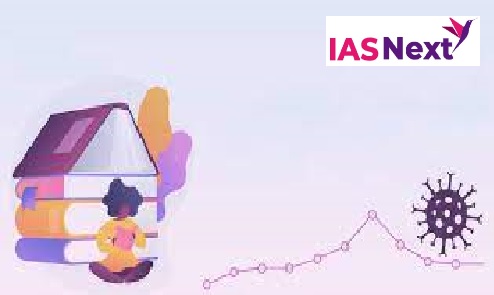CURRENT AFFAIRS
Get the most updated and recent current affair content on Padhaikaro.com
Digital Gap and Learning Losses
- IAS NEXT, Lucknow
- 18, Nov 2021

Reference News:
Schools are reopening for physical classes after 18 months of closures due to the COVID-19 pandemic.
- Although a variety of efforts were taken by many schools and governments to reach them through remote education, surveys are now showing that only a minority of students was able to access lessons of any sort during the lockdown and that widespread learning losses are likely.
What happened to India’s schoolchildren when schools were shut down?
- Almost 26 crore children were affected when 15 lakh schools across the country were shut down in mid-March 2020 as part of measures to curb the spread of COVID-19.
- At the time, most students were at the end of the academic year, in the middle of year-end examinations.
- During the summer, the government took steps to provide dry grain in lieu of the mid-day meals that 11 crore children would normally get at school, and to find a way to assess Class 10 and 12 students whose board examinations had been interrupted.
- As the new academic year got underway in June and July, schools were forced to begin remote education with some schools adopting digital technology for providing education services.
- The Centre promoted its digital education platform DIKSHA, adding content for a variety of age groups and languages, and the NCERT prepared calendars to help teachers and parents cope with the new reality of education from home.
- An Education Ministry report in mid-July said that DIKSHA had then scored 200 crore page hits and 60 lakh course completions since the lockdown.
- It added that in 25 States and UTs, non-interactive teaching methods such as TV and radio lessons were prevalent. Only a small minority of children, mostly in affluent private schools, benefitted from live, synchronous online classes.
- Given that education is a State subject, there was no national road map for remote education.
Were children able to access remote education?
- The Centre is yet to carry out any comprehensive assessment of the digital divide or its impact on remote education across the country.
- In August 2020, an initial survey of older students in Kendriya Vidyalayas, Navodaya Vidyalayas and a sample of CBSE-affiliated schools found that 80-90% of students depended on mobile phones, while the rest used laptops. Half the students did not even have access to textbooks.
- After a year without physical schooling, the Parliamentary Standing Committee on Education asked the Centre to compile a similar assessment of State government-run schools, but no report was made public.
- In August 2021, the Centre told the Lok Sabha that over three crore children across the country did not have any access to digital devices for education, although the data was incomplete with reporting only from 24 States and Union Territories.
- Over the last few months, independent surveys have shown that the ground situation is significantly worse.
- In September, a survey of almost 1,400 households in 15 States found that only 8% of students in rural India were able to access online education, while at least 37% have completely dropped out.
- Among Dalit and Adivasi children, only 5% had access to online classes.
What learning losses have been caused by this lack of access to remote education?
- With 22 States and UTs having completely opened their schools, and partial reopening in 12 other States, teachers and students are now grappling with the new ground reality of learning gaps.
- Local surveys such as the National Coalition on the Education Emergency’s survey in Karnataka show that more than three-fourths of teachers say their students are not at grade level.
- Reports from test centres suggest that many Class 3 students were incapable of completing the test without support from teachers.
- The Annual State of Education Report, conducted by Pratham, is also due to release the results of its own nationwide survey of rural education.